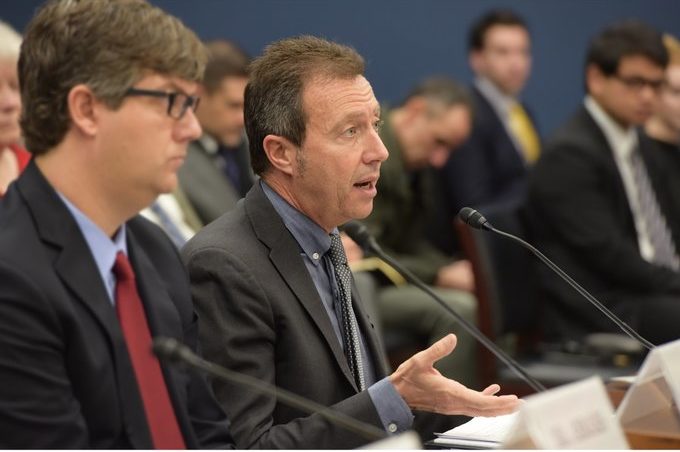Financing challenges and solutions addressed by witnesses
by Karen Kahn
The House Small Business Committee, chaired by Representative Nydia Velazquez and Ranking Member Steve Chabot, held a hearing February 12 to explore the challenges and benefits of employee-owned small businesses. Much of the hearing focused on the barriers to financing, particularly access to government guaranteed loans through the Small Business Administration.
Valasquez, along with Senator Kirsten Gillibrand, authored the Main Street Employee Ownership Act (MSEOA), which includes language that instructs the Small Business Administration (SBA) to ease lending restrictions for worker cooperatives and Employee Stock Ownership Plans (ESOPs). The SBA, however, according to witnesses, has not taken sufficient action and, thus, continues to limit opportunities for more employees to experience the benefits of employee ownership.
The personal guarantee requires one person to put up the collateral for the loan—a requirement that simply cannot work for a collectively owned business.
Five witnesses testified before the committee: Daniel Goldstein, CEO and president of Folience, an employee-owned media conglomerate in Cedar Rapids, IA; R.L. Condra, vice president of the National Cooperative Bank; John Abrams, founder of South Mountain Co, a Martha’s Vineyard design/build worker cooperative; and Mark Gillming, senior vice president of Messer Construction, headquartered in Cincinnati, OH.

Abrams and Gillming used their time to emphasize the positive impact of employee ownership on their respective businesses and local economies. Abrams, whose business has operated as a worker cooperative for nearly 35 years, noted that “employee ownership has been critical to its success,” because of the deep engagement and commitment of each worker-owner. Gillming emphasized the ways in which becoming an ESOP improved the quality of jobs offered by Messer and contributed to growth. The original 99-employee group that bought the company has grown over two decades to 1,200 employees in multiple regions.
Despite the benefits of employee ownership, said Daniel Goldstein, the federal government continues to put obstacles in the way of growth. For ESOPs, Goldstein identified three obstacles and offered solutions to each:
- The absence of federal guidelines on proper valuation of the business in an ESOP sale.
Businesses are afraid to consider an ESOP sale because they fear the U.S. Department of Labor (DOL) will challenge the business valuation, explained Goldstein. “It has been 45 years since ESOPs were established by ERISA,” he said, “but the Department of Labor has not issued guidance regarding the valuation process.” ERISA refers to the Employee Retirement Income Security Act, which governs management of retirement asset pools like ESOPs. Goldstein asked that Congress require DOL to define what constitutes “adequate consideration” when an ESOP trustee determines the price to be paid for the company. The DOL has in recent years challenged valuations of companies being sold to ESOPs as too high – thus benefiting the exiting owner and burdening employee beneficiaries of the ESOP with potentially excessive debt.
It has been 45 years since ESOPs were established by ERISA, but the Department of Labor has not issued guidance regarding the valuation process.”
–Daniel Goldstein, CEO and president of Folience
- Lack of capital to finance conversions
The MSEOA directs the SBA to streamline ESOP lending. But SBA continues to exclude ESOPs from its preferred lending program, which makes it more difficult to get timely financing. Goldstein requested Congress to direct the SBA to include ESOPs in the preferred lending program.
- Lack of awareness among sellers of the ESOP option
Finally, Goldstein emphasized that business owners are unfamiliar with employee ownership, and they cannot choose a succession option they don’t know or understand. They need unbiased information from a source that they trust. He asked that Congress direct the SBA to establish and resource a specific office, perhaps the Office of Small Business Development Centers, to actively promote employee ownership through public information efforts.
Worker cooperatives also have difficulty accessing SBA lending, R.L. Condra told the committee. His testimony concerned the SBA’s required personal guarantee for small business loans. The personal guarantee requires one person to put up the collateral for the loan—a requirement that simply cannot work for a collectively owned business. Condra noted that his bank has loaned more than $2 billion to cooperative businesses over 40 years, and they do not ask for a personal guarantee. The Department of Agriculture also lends to cooperatives, without a personal guarantee. Condra asked that Congress press SBA to find a solution to this financing hurdle in order to allow more communities to launch cooperative businesses.
At the end of February, the new SBA Administrator, Jovita Carranza, confirmed in January 2020, will appear before the Small Business Committee. Congresswoman Velazquez made it clear that financing for employee-owned businesses will be on the agenda.
Karen Kahn is a communications consultant and the editor of Employee Ownership News.
To follow Employee Ownership News, subscribe to the Fifty by Fifty newsletter or follow us at Medium.
